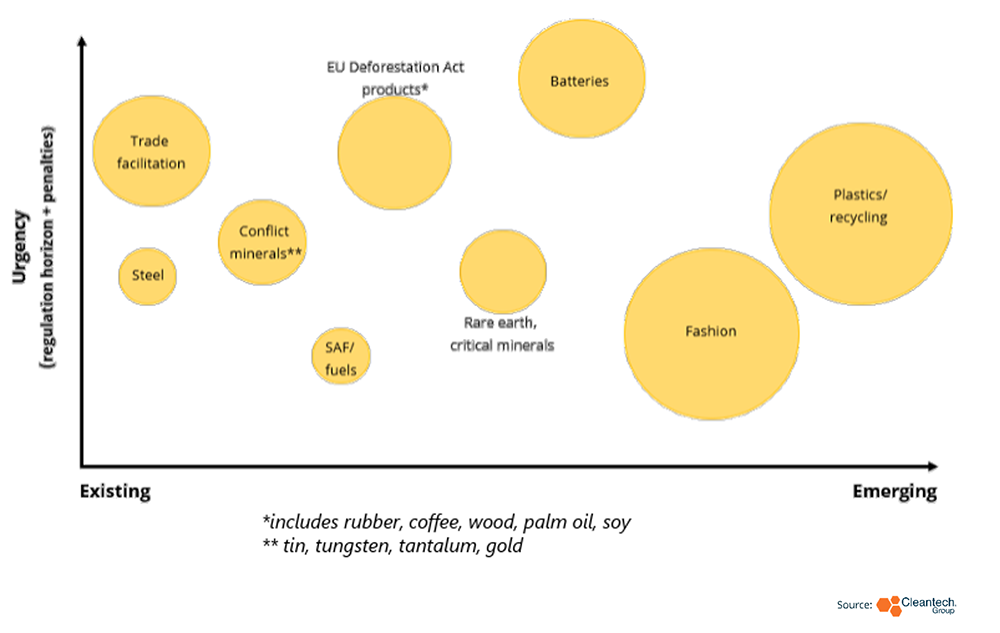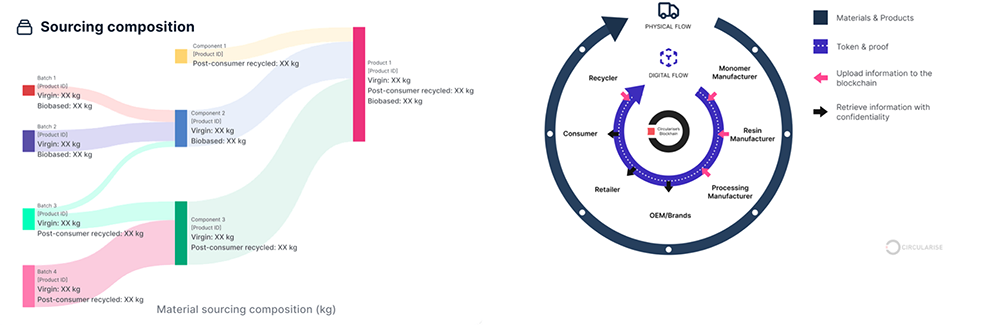Provide practice visibility, transparency, administration, optimization, resilience… these phrases are ubiquitous, and infrequently used interchangeably in conversations round provide chain sustainability and Scope 3 emissions reporting and administration. Underlying these overlapping, and generally vaguely outlined phrases, is the idea of traceability.
Traceability is the power to trace a product or materials throughout the whole provide chain, and attribute information on provenance, transport, and processes from preliminary procurement to last product.
Provide chain traceability is a important enabler of provide chain decarbonization, a variety of ESG laws, recyclability and circularity, and emissions mandates throughout almost each trade (metal, important supplies, chemical compounds, textiles, rubber, batteries, renewable power, and many others.). The battery trade is probably the use-case that has introduced the significance of traceability into the general public eye. Specifically, the EU´s EV Battery Passport mandate, slotted to take impact in 2027, would require “passports” for all EV and industrial storage batteries bought within the EU.
Whereas the precise particulars and necessities have but to be introduced, these passports will seemingly be required to offer data on battery parts, provenance, carbon footprint, and recyclability, amongst different information. With the intention to adjust to this mandate, battery and EV producers should entry and compile information from throughout their in depth provide chains. As OEMs have discovered, this can be a huge endeavor, encompassing digitalization of documentation processes, coordination of suppliers, navigation of various information privateness and sharing laws, and information verification.
The sphere of provide chain traceability has burgeoned in response to this problem; essentially the most skilled innovators have spent the previous 8-10 years creating software program platforms to trace supplies from starting to finish of their respective provide chains and compile the important thing information factors required by particular industries.
Examples of Present and Future Demand Markets for Traceability Options

Demand Markets for Traceability Options
Demand for traceability options is pushed largely by laws, as seen within the instance of battery passports. Commerce facilitation is one other key regulatory driver. Regulation such because the U.S. Uyghur Pressured Labor Prevention Act (UFLPA) require particular provenance and traceability for items to enter particular international locations.
The excessive prices related to stranded items and provide chain disruptions are an efficient incentive for suppliers and producers to deploy traceability options alongside their provide chains. Incoming regulation with particular local weather and sustainability focus should set up clear information and reporting requirements in addition to stringent penalties for non-compliance as a way to successfully leverage traceability to satisfy sustainability objectives.
Some examples embrace:
- EU Deforestation Act: Affected sectors embrace espresso, rubber, tires, soy, palm oil, wooden, and many others.
_ - France’s Anti-Waste for Round Financial system Regulation (AGEC): Affected all waste-generating merchandise bought in France
_ - EU Carbon Border Adjustment (CBAM): Affected sectors embrace metal and aluminum
Whereas regulation is at present important to establishing a sound enterprise case for offering traceability options, compliance just isn’t the one use-case for these instruments. OEMs within the chemical and automotive industries particularly are exploring how traceability could be leveraged for brand new income streams, enterprise fashions, and operational effectivity.
- Leveraging evaluation of value and emissions information from upstream suppliers to satisfy Scope 3 emissions (probably considering emissions taxes)
_ - Improvement of sustainable merchandise and enterprise strains with verifiable information on recycled content material, carbon footprint, and different local weather information (e.g., chemical compounds, plastics) and to stop claims of greenwashing
_ - Enabling round economic system initiatives, monitoring merchandise post-sale and facilitating recycling (e.g., textiles, vogue, plastics, battery parts)
_ - High quality assurance and danger administration: significantly related for sectors akin to high-quality metal manufacturing
_ - Certification of low-emissions fuels with advanced lifecycle emissions (e.g., biofuels)
The Innovation: Blockchain, Information Verification, and Safety
The traceability area stays a creating market. Essentially the most skilled, market-leading innovators have been creating their merchandise for about eight years. As a result of complexity of thorough provide chain information aggregation and administration, many have chosen to give attention to particular sectors, leveraging deep sector experience and worth chain expertise. Area experience and bottom-up improvement of software program options that particularly deal with ache factors of particular person sectors give these innovators a big benefit over corporates (akin to IT providers) inquisitive about increasing into traceability.
Traceability Platform Course of Examples

Supply: Circularise
Innovation:
- Technological evolution of key software program in recent times (e.g., blockchain, cybersecurity) has unlocked functionality to completely hint merchandise by means of the availability chain
_- Leveraging of blockchain for safe, decentralized information sharing, safety of information sovereignty, and levelized accessibility
_
- Leveraging of blockchain for safe, decentralized information sharing, safety of information sovereignty, and levelized accessibility
- Cybersecurity, encryption, and information verification options to guard delicate and proprietary information (e.g., Circularise)
_ - Product and high quality certification by way of cryptographic key (e.g., Steeltrace, Circulor)
_ - Interoperable options together with versatile information assortment (e.g., Minespider), and integration of a variety of upstream information seize instruments (e.g., EON)
_ - Authentication and digital id options to hint uncooked supplies (e.g., Mud Id, SMX)
Most innovators have developed SaaS fashions and subscription-based providers paired with challenge and consulting providers, shopper schooling, or assist on regulatory and compliance necessities. Whereas there’s at present a variety of information practices and repair choices, solidification of regulatory necessities will facilitate basic standardization and the event of particular differentiation factors between innovators. At the moment, a key differentiator is using both public or non-public blockchain to handle information sharing and privateness challenges, in addition to the power to offer information safety and verification.